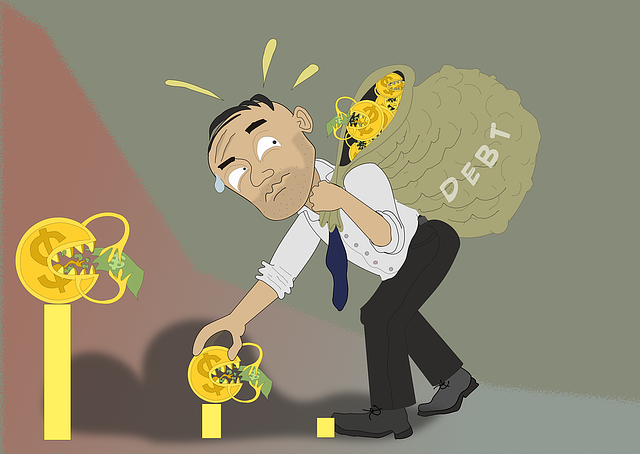Bad Debt | Definition
Have you ever wondered why most businesses and banks do background checks before lending money? Well, they are afraid of not receiving their money back, let alone the interest! It happens a lot, especially with businesses that offer extended credit periods to their customers. Accountants call it ‘bad debt’.
That being said, bad debt is the portion of receivables that the business is unlikely to receive. It could be due to bankruptcy of a customer, disagreement over price or quantity, poor cash management of the customer, or inability of the business to collect their receivables. Bad debt is an expense and is written off in the books. Sometimes, businesses forecast a portion of receivables as bad debt and make an allowance for receivables to faithfully represent the business’ image to stakeholders.
How to Account for Bad Debt
Let’s say a business has total receivables of $100 from 10 different customers. The business finds out that one of their customers has gone missing and the amount won’t be received. The business will account for it as follows:
| Debit | Credit |
|---|---|
| Bad Debt Expense $10 | Account Receivable/Receivable Control Account $10 |
Next year, total receivables are $300. It is unlikely that they will receive the full $300 considering their past performance. To reflect the true position, an allowance should be made. A good approximation would be 10%, that is the bad debt percentage of the prior year. Therefore, total receivables would become $270, after deduction of $30 bad debt allowance.
Why Bad Debt Occurs?
Bad debt is an unpleasant experience that no business wants to experience. You do your calculations, about to arrive at a bonus worthy profit figure and BOOM, find out one of your receivables will not pay the handsome amount of $10,000. Nobody likes that. Even accountants hate it!
However bad it is, it’s still there and is a regular thing for businesses with huge receivable balances. Let’s talk about why bad debts occur and what are the techniques that businesses use to mitigate the risk of bad debts.

Insolvency/Bankruptcy of a Customer: A customer making huge losses that result in the termination of their business and not having enough assets to pay their debts. Either the full amount will become bad debt or partial, depending on the type of debt and value of the remaining assets.
Disagreement over quality or price: A customer unhappy with the product’s or service’s quality OR price and strikes back with not paying the money. If the issue is not resolved, it’d probably lead to a lawsuit but the conservatism principle requires businesses to record expected losses/expenses in the period to which they relate. Therefore, it would be recorded as bad debt.
The inability of a Customer to pay: This form of bad debt arises when a customer temporarily doesn’t have enough cash or cash equivalents to pay off their debts. The coin can either flip or become permanent bad debt if the customer doesn’t generate enough cash to cover the debt.
Poor Receivable Control Management: If the system in place for tracking and collecting receivables have flaws, the business will end up having increased bad debt balance.
The above are major issues that trigger bad debts. There are some techniques that are used to minimize the risk of bad debt in businesses.
Prevention of Bad Business Debt
Increased bad debt can create dire consequences for any type of business. An unprofitable business may survive if it has enough cash or cash equivalents to run its operations but a profitable business with poor cash flow will find it hard to meet ends and ultimately shut down its operations. Therefore, cash flow is of keen importance to any business and needs to be managed with greater care.
Businesses use different techniques to prevent and control their bad debt balance. Some measures that help in mitigating the risk of bad debt include:
Checking Credit Worthiness of New Customers: Gather credit data before granting credit to new customers. The data is normally taken from credit agencies, old suppliers, and customers’ banks. This way, the credit requests of customers with a poor credit history will be denied.

Credit Limit: Setting up credit limits for customers is extremely important to keep bad debt to a minimum. Credit limitations apply to both new and existing customers. To set limits for new customers, once their credit history is confirmed from different sources, a small credit account is opened and the limit is increased as they go smooth with their deadlines and/or expand their operations.
Credit limits for existing customers are reviewed regularly to ensure the limits are up-to-date and reflect the current status of their business and credit history.
Prompt Invoicing: As soon as a service or product is delivered, the business should send out an accompanying invoice. Sending invoices at a later time, say at the end of each month, is not a good idea. It would either result in a late payment or the customer not paying at all, hence increase the bad debt balance.
Additionally, the address and payment details of invoices should be checked to ensure no errors have been made.
Review the System Regularly
Some businesses expand and prosper with time while others fail to even survive. A business should assess the financial position of its receivables on regular basis. If a receivable misses the deadline, a reminder or letter of demand should be sent out and no further credit granted to prevent future damage.
Having a robust receivable control system is vital for a business’ cash flow and can reduce the bad debt of the business. While chasing bad debt, the business may incur legal and other costs, that at times, can outweigh the receivable’s balance.
